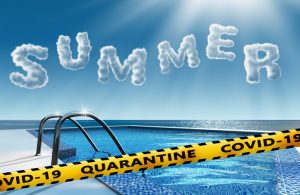 Stress and anxiety are connected but also different. Stress is related to feeling overwhelmed and incapable of managing the things that you have to do. Productive stress motivates you to get stuff done; poisonous stress contributes to worry and anxiety. You can’t get things accomplished to feel a sense of satisfaction. Stress can also be related to life circumstances such as poverty, illness and racism that cause you distress but have not clear resolution in sight.
Stress and anxiety are connected but also different. Stress is related to feeling overwhelmed and incapable of managing the things that you have to do. Productive stress motivates you to get stuff done; poisonous stress contributes to worry and anxiety. You can’t get things accomplished to feel a sense of satisfaction. Stress can also be related to life circumstances such as poverty, illness and racism that cause you distress but have not clear resolution in sight.
Anxiety is a natural physiological and psychological response related to fears and worries. Panic, irrational thinking, reactivity, increased heart rate, perspiration, shortness of breath or insomnia are all signs of anxiety. Anxiety is about safety and security. Anxiety arises because people want to make uncomfortable feelings and uncertainty go away immediately–whether these concerns are based in reality or distorted and based on negative expectancy. Anxiety disorders often have a negative impact on several areas of someone’s functioning simultaneously.
It’s common for people to experience some type of anxiety seen as worry, dread, fear or distress. Some nervousness in a new situation or worry about chronic stress is expected. If these concerns fail to go away once you’ve learned how to manage the worry or stress and you experience persistent anxiety that is interfering with daily living, healthy choices, mood stability, or functioning at work, anxiety has become problematic and needs treatment. If your anxiety is higher than normal, first consult with your doctor to rule out any medical causes. Then, you’ve got to learn some tools to manage it. Meditation, yoga, daily exercise, therapy and medication can be extremely useful in reducing anxiety. You’ll benefit from learning how to soothe yourself and confront anxious, distorted thoughts to reduce their intensity. Don’t try to remove anxiety from your life: it doesn’t work because we need some anxiety to function, protect and aid us in dangerous or challenging situations. Instead, focus on anxiety reduction so that you feel like you have more control over it. The goal is teaching yourself how to manage the volume button on your anxiety rather than having blast you at full volume with its fears and worries.



 Teenagers can push your buttons like no one else. Teens with ADHD–living
Teenagers can push your buttons like no one else. Teens with ADHD–living 
 Remember, they don’t want conflict in your home any more than you do. They just don’t see other ways to get what they want.
Remember, they don’t want conflict in your home any more than you do. They just don’t see other ways to get what they want. 
 When young adults have lived independently, they are accustomed to making their own schedules and sleeping, eating, studying and socializing according to their own rhythm. In general, they’re not that interested in free advice about what they could be doing better or differently. Instead, they want to be respected for the autonomy that they’ve developed and be seen in their developing maturity.
When young adults have lived independently, they are accustomed to making their own schedules and sleeping, eating, studying and socializing according to their own rhythm. In general, they’re not that interested in free advice about what they could be doing better or differently. Instead, they want to be respected for the autonomy that they’ve developed and be seen in their developing maturity.
 With some schools already closed and others finishing up for the summer, parents of kids with ADHD are all asking the same question: What do we do now? Most in-person camps and activity programs have been cancelled and many families have lost necessary childcare, much-anticipated vacations and fun social gatherings. Instead, you are facing weeks of more time spent sheltering-in-place, supervising your children and teens while trying to work from home or scrambling to find safe alternatives so you can go to your job. You’re tired, they are bored and everyone is frustrated. What are your options for salvaging your summer?
With some schools already closed and others finishing up for the summer, parents of kids with ADHD are all asking the same question: What do we do now? Most in-person camps and activity programs have been cancelled and many families have lost necessary childcare, much-anticipated vacations and fun social gatherings. Instead, you are facing weeks of more time spent sheltering-in-place, supervising your children and teens while trying to work from home or scrambling to find safe alternatives so you can go to your job. You’re tired, they are bored and everyone is frustrated. What are your options for salvaging your summer?
 periods to various activities including exercise, projects, screen time and rest. Include meals and snacks. This doesn’t have to be rigid but it needs to be consistent. Think like a camp counselor. For example, maybe there’s wake up by 9, breakfast, getting dressed, activity period #1, snack, activity period #2, lunch, quiet time for reading or listening to music–something that promotes calm, activity period #3, screen time, dinner, family game or television show, bath or shower, pajamas and lights out by 10.
periods to various activities including exercise, projects, screen time and rest. Include meals and snacks. This doesn’t have to be rigid but it needs to be consistent. Think like a camp counselor. For example, maybe there’s wake up by 9, breakfast, getting dressed, activity period #1, snack, activity period #2, lunch, quiet time for reading or listening to music–something that promotes calm, activity period #3, screen time, dinner, family game or television show, bath or shower, pajamas and lights out by 10.
 explicit guidelines for practicing social distance with peers and family members. Take a tape measure and show them what six feet looks like. Explain the basic science of why and how COVID-19 is so contagious and the risks that exist not only for them but for others too. Talk about how and where children and teens can safely hang out with friends–a park, a driveway or a backyard. Help younger kids set up get-togethers and offer assistance to teens if they are struggling. Work with them to find safe and fun outlets and activities to connect with peers. The other day I saw four teen boys playing frisbee in the park with masks and gloves. I was very impressed!
explicit guidelines for practicing social distance with peers and family members. Take a tape measure and show them what six feet looks like. Explain the basic science of why and how COVID-19 is so contagious and the risks that exist not only for them but for others too. Talk about how and where children and teens can safely hang out with friends–a park, a driveway or a backyard. Help younger kids set up get-togethers and offer assistance to teens if they are struggling. Work with them to find safe and fun outlets and activities to connect with peers. The other day I saw four teen boys playing frisbee in the park with masks and gloves. I was very impressed! 